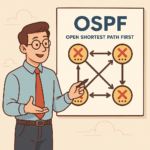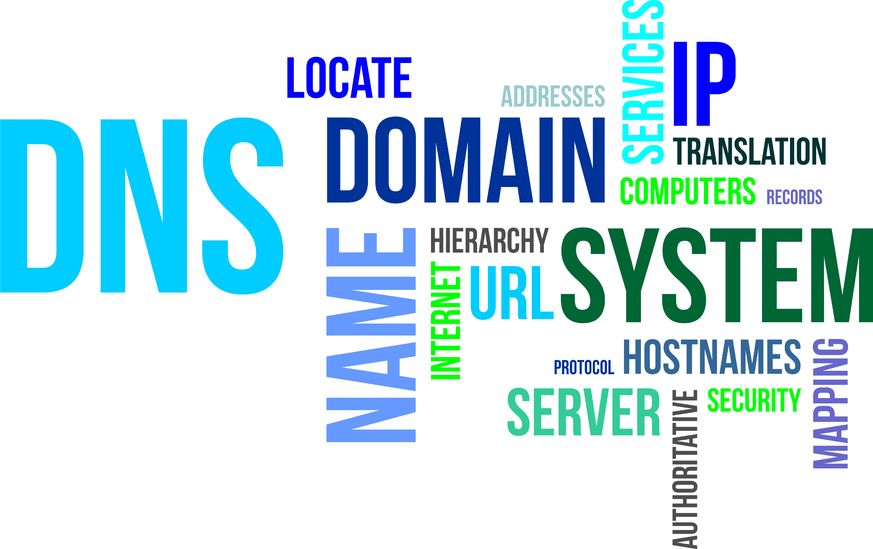Have you ever heard about PowerDNS? It is a complete software platform that you can use instead of BIND. It provides excellent performance and doesn’t use a lot of resources.
Table of Contents
The history of PowerDNS
PowerDNS was first introduced in 1999 by Bert Hubert with the task to write load balancing software for V3 Redirection Services for “come.to”, “browse.to“, and “go.to”. Back then, it was still a close-source. After the Dot Com Bubble, the company needed to re-think their future and released the software as an open-source. It started to provide commercial services from 2005 and in 2015 became a part of Open-Xchange.
It quickly gained attention for its unique architecture and capabilities. Unlike traditional DNS servers that store data in zone files, PowerDNS uses databases like MySQL, PostgreSQL, and SQLite to store DNS information, making it more flexible and easier to integrate with existing infrastructure.
One of the standout features of PowerDNS is its support for multiple backends, allowing administrators to choose the most suitable database backend for their specific needs. This adaptability makes PowerDNS well-suited for a wide range of deployment scenarios, from small businesses to large enterprises.
PowerDNS platform
PowerDNS or pdns is an open-source (GPL) software. It provides software to create authoritative DNS, Recursive DNS, DNS loading balancer, Debugging tools, and APIs to provision zones and records. A complete suite of DNS-related software that you can use for your company.
It provides a flexible, extensible, and high-performance platform for managing DNS. Unlike traditional DNS solutions, PowerDNS is designed with flexibility and adaptability in mind. Therefore, it can be adjusted to answer a wide range of DNS needs, from simple authoritative DNS serving to complex and advanced features.
Experience Industry-Leading DNS Speed with ClouDNS!
Ready for ultra-fast DNS service? Click to register and see the difference!
Authoritative Server
PowerDNS’s Authoritative Server is designed to handle authoritative DNS queries efficiently. It allows domain owners and administrators to manage their DNS zones and DNS records. This includes records like A (address) records for mapping domain names to IPv4 addresses, MX (mail exchange) records for email routing, TXT records for various purposes, including domain verification. PowerDNS’s modular architecture and support for different backends allows administrators to store DNS data in various data sources, such as databases or flat files.
It enables the authoritative DNS service from all popular databases like MySql, Oracle, PostgreSQL, SQLite3, Microsoft SQL Server, LDAP, and text files.
Authoritative Server works with many different scripts like Java, Python, C, C++, Perl, Lua. You can use it for dynamic redirection, spam filter, or real-time intervention.
Recursor (Recursive DNS)
PowerDNS’s Recursor is a component that provides Recursive DNS resolution. It handles DNS queries from clients, gets the necessary DNS information by querying Authoritative servers, and then returns the results to the client. The Recursive DNS is designed to optimize performance by implementing caching mechanisms and managing queries efficiently. It helps achieve faster DNS lookups and improves user experience by reducing latency.
It provides a high-performance Recursive DNS server. PowerDNS Recursor can use multiple processors. Just like the Authoritative Server, it supports various scripts. A good advantage is that it can be reconfigured without downtime.
Dnsdist (load balancer)
Dnsdist is a powerful load balancer that allows administrators to distribute incoming DNS queries across multiple Authoritative servers or DNS resolvers. It ensures the traffic is routed to the optimal servers, which results in delivering excellent performance.
It can also be configured to implement various filtering and policy rules, such as blocking malicious DNS queries or sending certain types of DNS queries to precise servers. In addition, Dnsdist provides detailed statistics and metrics, which are very helpful for administrators to monitor the health and efficiency of their DNS infrastructure.
Key Benefits and Features of PowerDNS
PowerDNS stands out mainly due to its remarkable benefits and features:
- High Performance and Scalability: PowerDNS is well-known for its exceptional performance. It can handle many queries per second while maintaining low latency. On the other hand, its modular architecture allows scaling and distributing the load across multiple points.
- Flexible Backends: Certainly, its standout feature is its ability to support multiple backend databases simultaneously. The flexibility and modular architecture allow organizations to choose the backend that best fits their existing infrastructure, data management practices, and performance requirements.
- DNSSEC Support: Domain Name System Security Extensions (DNSSEC) enhance the security of DNS by digitally signing DNS data. PowerDNS offers complete DNSSEC support, allowing the use of secure DNS services.
- Dynamic Updates: This feature allows authorized clients to dynamically add, modify, or delete DNS records. It is especially helpful for environments where frequent changes to DNS records are required, such as dynamic IP allocation in ISP environments.
- API Integration: PowerDNS comes with an HTTP-based API that allows seamless integration with other systems. Additionally, the API-based approach simplifies processes like automation, monitoring, and management of DNS services.
- Geo-Redundancy: PowerDNS offers built-in geographical load balancing and failover capabilities. It can direct users to the nearest available server, enhancing both performance and resilience.
- Various Use Cases: It is a proper solution in many different cases, including enterprises managing complex DNS infrastructures, service providers handling large DNS query loads, organizations focusing on DNS security with DNSSEC, and environments requiring automation and integration capabilities.
It is a fantastic tool that also offers instant startup when hosting many domains, different scripts, IPv6 support, use of multi-core (32+ cores) processors, and on top of that, it has low memory requirements.
PowerDNS vs. BIND
When choosing a DNS solution, it’s essential to consider the strengths and features of PowerDNS and BIND.
PowerDNS:
- Flexibility and Performance: PowerDNS supports multiple backend databases (MySQL, PostgreSQL, SQLite), making it highly adaptable for dynamic and scalable environments.
- Advanced Features: It offers DNSSEC, API-based automation, and a modular architecture, allowing seamless integration with existing infrastructure.
- Modern Design: Designed with performance and contemporary needs in mind, PowerDNS excels in handling high query loads efficiently.
BIND:
- Stability and Reputation: BIND has a long-standing reputation in the DNS world for its stability and reliability.
- Extensive Documentation: It has comprehensive documentation and a large user community, making it easier to find support and resources.
- Traditional Setups: Ideal for setups where stability and a proven track record are the primary requirements.
Choosing between PowerDNS and BIND depends on your specific needs. Opt for PowerDNS if you require flexibility, high performance, and advanced features. Choose BIND if you prioritize stability and a well-established solution for traditional DNS setups.
Common PowerDNS Configuration Mistakes to Avoid
PowerDNS is a great tool, but like any DNS server, it requires careful setup. Beginners often run into a few common mistakes that can cause problems with performance, security, or even DNS resolution.
One of the most common errors is not properly configuring the backend database. PowerDNS uses databases like MySQL or PostgreSQL to store DNS records, and if the database connection settings are wrong or the required tables aren’t set up correctly, it won’t be able to load your DNS zones.
Another mistake is missing or incorrect DNS records, especially the SOA (Start of Authority) and NS (Name Server) records. These are essential for your DNS zone to function properly. Even a simple typo in an A or MX record can lead to downtime or email delivery issues.
Using outdated PowerDNS packages is another overlooked risk. Older versions may lack important security patches or performance improvements. Always ensure you’re running the latest release.
Finally, leaving the API or web interface open to the Internet without authentication is a serious security threat. Always protect management interfaces with strong passwords or firewall rules.
Taking time to test your setup and read the official PowerDNS documentation can help you avoid these issues.
Conclusion
PowerDNS is a great alternative to BIND. It is full of features, and it can provide a quality and secure service. The platform offers a comprehensive suite of tools that serve the various needs of different domain administrators and networking professionals. It is a fantastic solution that highly prioritizes performance and security.







